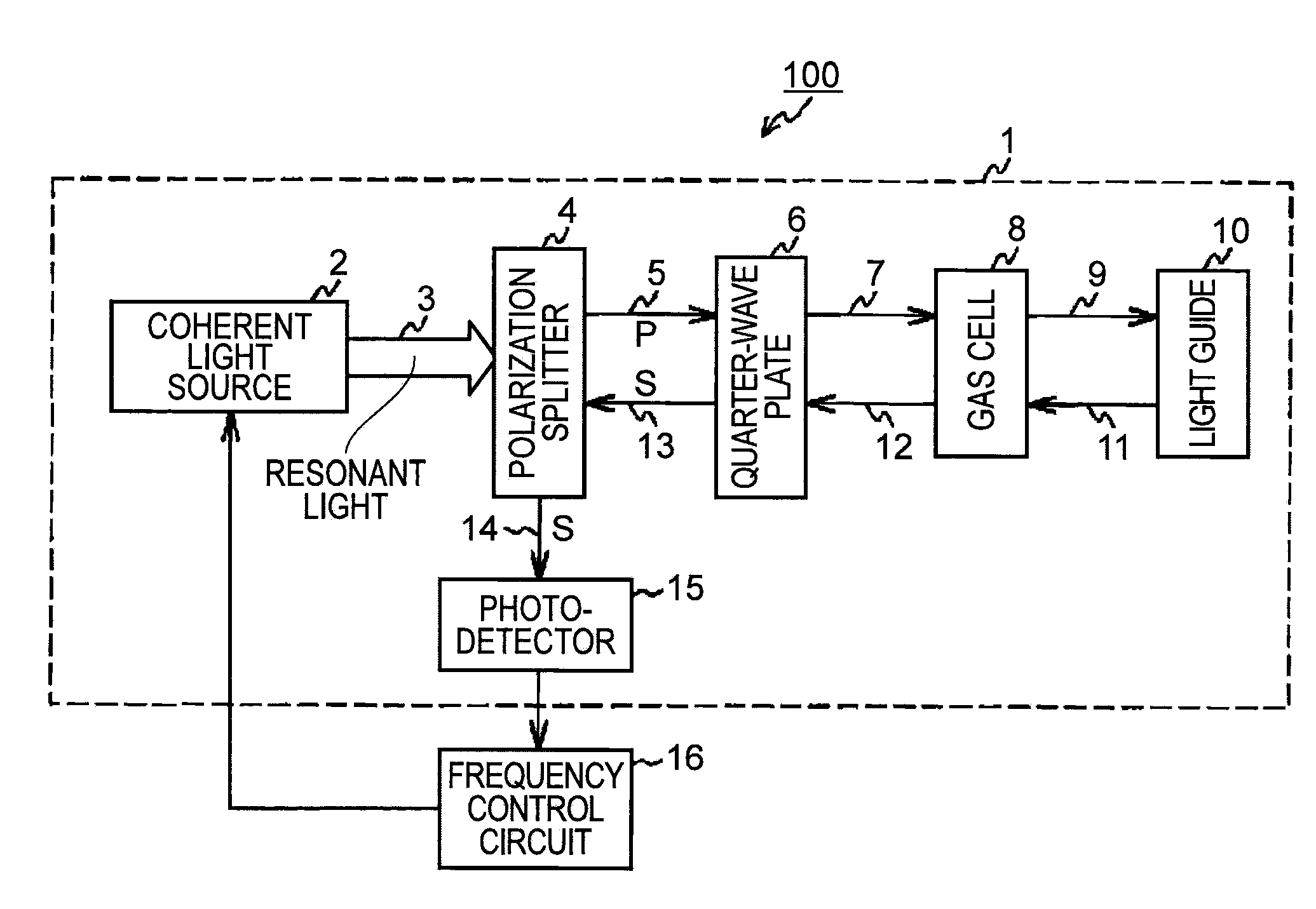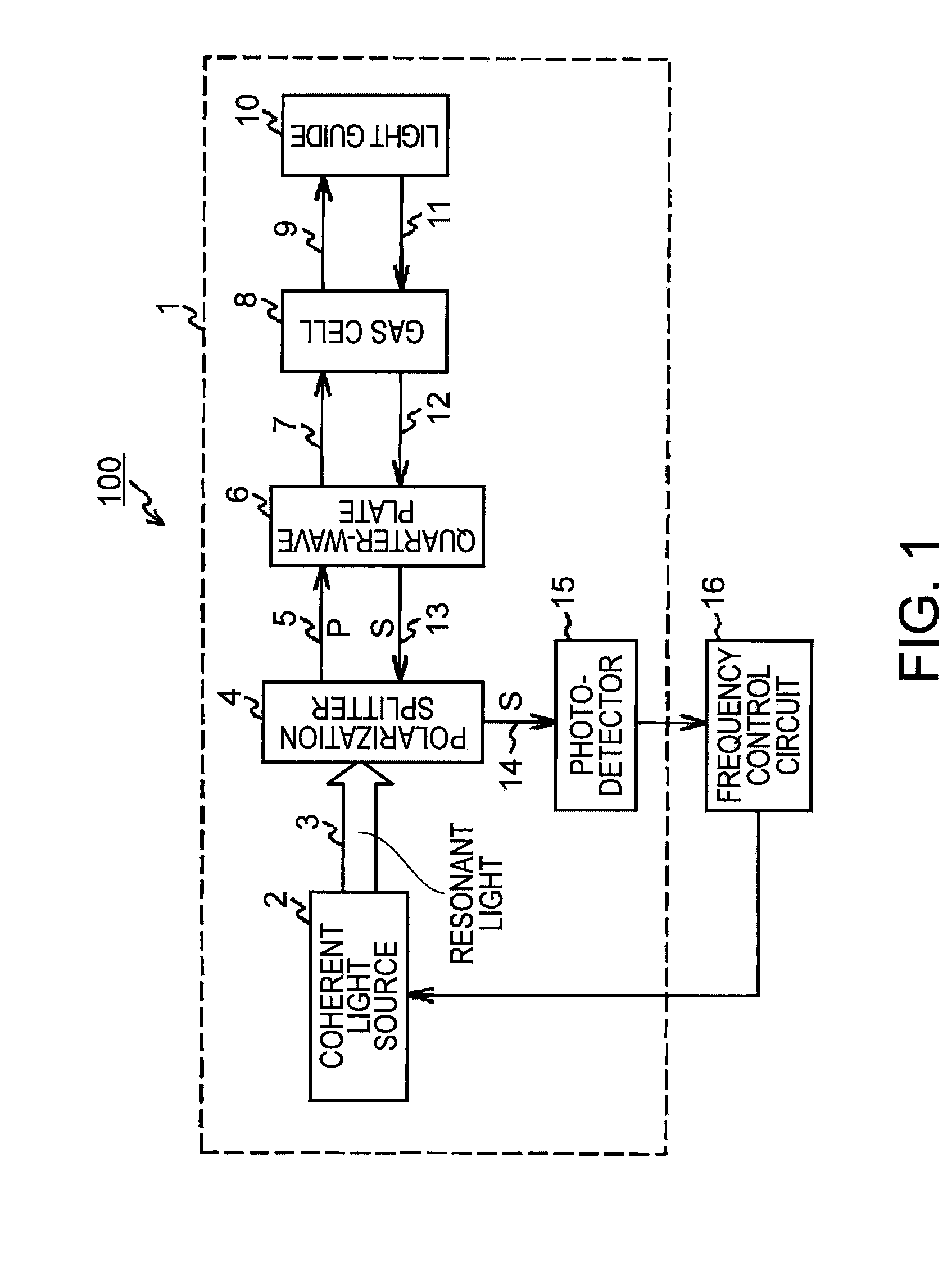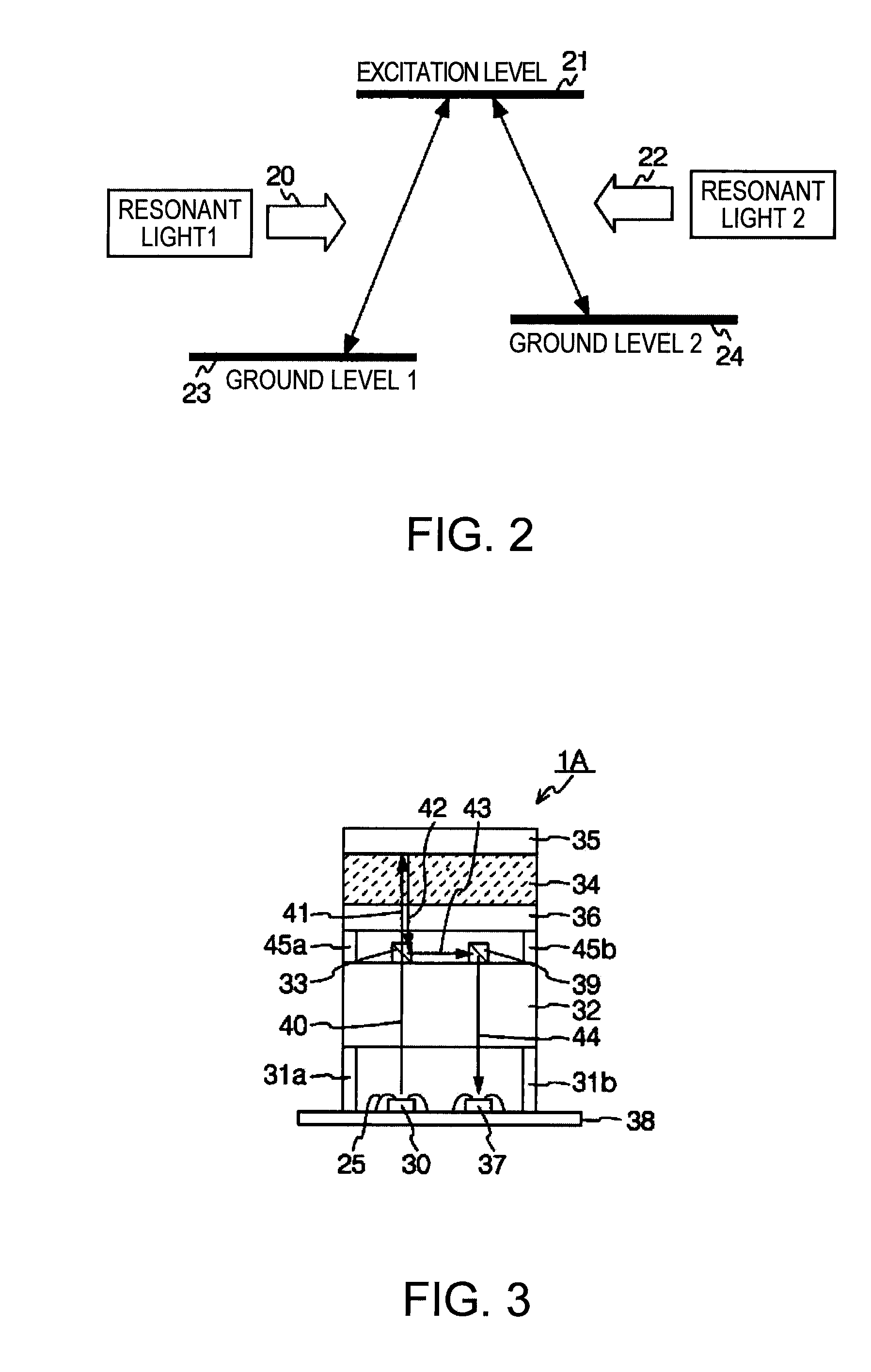Optical system and atomic oscillator background
an atomic oscillator and optical system technology, applied in the field of optical systems of atomic oscillators, can solve the problems of increasing the height of the entire optical system, increasing the complexity of adjustment, and less desirable s/n characteristics, and achieves the effects of improving signal-to-noise characteristics, reducing the length of bonding wiring, and being easy to moun
- Summary
- Abstract
- Description
- Claims
- Application Information
AI Technical Summary
Benefits of technology
Problems solved by technology
Method used
Image
Examples
first embodiment
[0044]FIG. 3 is a schematic view illustrating the structure of an optical system according to the invention. An optical system 1A includes a light emitting element 30 (the coherent light source 2 in FIG. 1) and a light receiving element 37 (the photodetector 15 in FIG. 1) on a substrate 38, and each element is electrically coupled to the substrate 38 with a bonding wire 25. The optical system 1A further includes a passive optical device 32 that collects a coherent light 40 emitted from the light emitting element 30 so as to convert the coherent light 40 into collimated light and change the polarization state of the coherent light 40. Moreover, the optical system 1A includes, on the passive optical device 32, a beam splitter 33 and a second mirror 39 that guides s-polarized light to the substrate 38, the s-polarized light being changed the optical path by the beam splitter 33. Further, a quarter-wave (λ / 4) plate 36, a gas cell 34, and a first mirror 35 are layered above the second mi...
second embodiment
[0054]FIG. 4 is a schematic view illustrating the structure of an optical system according to the invention. The same reference numbers are used for elements similar to those described in FIG. 3. An optical system 1B includes a gas cell 46 and a first mirror 47 arranged within a range that covers an optical path. In other words, it is sufficient that the gas cell 46 and the first mirror 47 are included only in an optical path in which light passes.
[0055]Therefore, the gas cell 46 and the first mirror 47, located where light does not pass, are not essential. Therefore, in this embodiment, the gas cell 46 and / or the first mirror 47 is arranged only in the part that is designated to become the optical path. This enables reducing the size of the gas cell 46 and the first mirror 47 to a minimum, thereby reducing costs for components. Similarly, it is sufficient that the quarter-wave plate 36 is in the optical path, allowing the reduction of the size thereof.
PUM
| Property | Measurement | Unit |
|---|---|---|
| optical | aaaaa | aaaaa |
| frequency | aaaaa | aaaaa |
| optical path | aaaaa | aaaaa |
Abstract
Description
Claims
Application Information
 Login to View More
Login to View More - R&D
- Intellectual Property
- Life Sciences
- Materials
- Tech Scout
- Unparalleled Data Quality
- Higher Quality Content
- 60% Fewer Hallucinations
Browse by: Latest US Patents, China's latest patents, Technical Efficacy Thesaurus, Application Domain, Technology Topic, Popular Technical Reports.
© 2025 PatSnap. All rights reserved.Legal|Privacy policy|Modern Slavery Act Transparency Statement|Sitemap|About US| Contact US: help@patsnap.com



